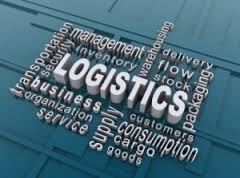-
Are you considering expanding your business by exporting?

Many business owners find that exporting can help to expand their business, diversify their revenue and increase their profits.
It has also found that companies that export are more profitable than those that only do business in Australia.
So while exporting could bring many benefits to your business, being successful requires time, money and a great deal of commitment.
That’s why it’s important to understand exactly what exporting involves before you start, research shows that poor planning and inadequate market knowledge are some of the main reasons why the overseas expansion plans may fail.It’s important that you make your business ‘export ready’.
• Establishing strong foundations
Having a clear idea of exactly what you are hoping to achieve by exporting can give you the best chance of success.
This could be access to new markets, increasing your production volumes ,Consider visiting your proposed target market, this can help you to experience firsthand the economic and market conditions, business culture, future competitors and demographics.
Being a successful exporter also requires a significant time commitment right across your business, so confirming support within your business for an export project allows you to proceed with confidence & understanding all the costs associated with exporting helps you make an informed decision on whether your business is ready to start an export project.The main differences between exporting and operating in Australia include:
• a longer cash flow cycle, which could increase the pressure on cash flow and working capital
• being further away from customers increases the risk of non-payment and makes it more difficult to collect debts
• getting paid in other currencies can expose you to foreign exchange risk, which can impact profit margins
• access to finance can be more difficult, as Australian banks are often reluctant to accept overseas assets as security for loans
• the upfront costs of establishing export operations may take several years to recover, which can reduce the cash flow and working capital available for domestic operations.To be successful, you need to learn about a wide range of issues, such as how foreign markets operate, different industrial relations policies and practices, and new tax provisions and labour regulations. You need to become familiar with the standard export documents, many of which vary depending on the product and destination.
Taking the time to understand the culture, language, business practices and regulatory environment of the country in which you’re looking to invest can be time well spent.
Once you’re confident that your business can handle the financial challenges of exporting, the next step is to put together an export strategy.The country or countries that you will target, including the size of the market, the cities or regions you will be targeting, the demographics of your target market
• the market segment in each country that will buy your product or service, where they are located, how much they will pay
• your competitors in each country, including their strengths, weaknesses, distribution strategy, price point and customer service strategy
• your distribution strategy, covering how you will distribute your product or service, the delivery costs, how you will service your customers
• regulatory requirements, such as the government standards that you will need to adhere to, the licenses that you will need to apply for, the warranties and after-sales service that you will need to provide
• marketing and branding, whether your business name, brand or logo is suitable for the country you are targeting, any trademark or brandmark
